
Editor's Note: Last fall, state and federal leaders admitted that the Chesapeake Bay region will not meet its most fundamental 2025 cleanup goal, aimed at reducing nutrient pollution in the Bay and the rivers that feed it. Now, many people are asking, “How did we get here?” and “What’s next?” This article is the first in a series that will tackle that question.
For 40 years, the region has struggled to meet its goal largely because of an inability to sufficiently reduce nutrient pollution from farms in Maryland, Pennsylvania and Virginia. The reasons are complex. But it’s important to explore those challenges as the region begins a tough conversation about the future of the Bay restoration effort beyond 2025.
This first article in our series looks at water quality goals for the Bay and the economic drivers that conflict with them. Karl Blankenship, founding editor of the Bay Journal and author of this series, has been reporting on Bay cleanup policies for more than 30 years.
Rarely has the future been so clear. At midnight on Dec. 31, 2025, the Chesapeake Bay region will miss its goal for reducing nutrient pollution in the Bay. It will be the third miss, after work toward deadlines in 2000 and 2010 also came up short.
While progress has been made, trends since the most recent Bay cleanup goals were set in 2010 suggest the region might not hit its nutrient reduction target for many decades.
The primary reason for the shortfall is the region’s inability to grapple with the 25% of the Bay watershed that is covered by farms.
It’s been known since 1983, when state and federal governments agreed to work together to restore the Bay, that agriculture was a leading source of nutrients — nitrogen and phosphorus — that turn the water murky with algae and rob it of oxygen.
Despite that, those leading the restoration effort have repeatedly underestimated the magnitude of the challenge they face and the amount of economic pain its solutions would impose on farmers.
Bay cleanup leaders, environmental advocates and others have often touted solutions as being “win-win” or “common sense” or simply a matter of raising enough money to induce far more farmers to adopt runoff control measures.
Missing in such assessments are the potentially dire consequences for the region’s agricultural sector. Far from being win-win, the U.S. Geological Survey recently estimated that meeting nutrient goals for the Bay could require taking approximately 44% of the region’s roughly 8.2 million acres of farmland out of production or instituting dramatic actions that would almost certainly affect farm income.

Farmland and marsh are nestled together along Tuckahoe Creek in Maryland. The creek flows into the Choptank River, which in turn enters the Chesapeake Bay.
Further complicating the issue are state and federal policies and, most importantly, market forces that drive farmers to intensify production for a growing national and global population. That can’t be done without placing large amounts of nutrients on the land, some of which inevitably escape into waterways.
“Agriculture is a nutrient-use-intensive industry because that’s how growing food works,” said Ken Staver, a farmer and a scientist with the University of Maryland Wye Research and Education Center. “People act like agriculture is like any other industry. But it’s the most fundamental thing human beings do. Growing food is not like making hula hoops. It is not optional.”
The result is this: Nearly half of the nitrogen reaching the Bay today, at least according to computer model estimates from the Chesapeake Bay Program partnership, comes from the roughly 83,000 farms in the Chesapeake’s watershed.
Bay Program data shows that actions to control runoff from farms accelerated during the last decade, as has spending: Nearly $2 billion was spent by state and federal agencies from 2014 through 2022 to reduce farm runoff. Farmers contributed money on top of that to install and maintain those conservation practices.
But the amount of nitrogen reaching the Bay from farms has changed little since new cleanup goals were set in 2010, according to computer model estimates.
It’s not that their efforts accomplished nothing. Rather, they staved off substantial headwinds as farmers faced market demands to produce more crops and livestock.
Since the latest cleanup goals were set, the animal population in the watershed — chickens, turkeys, cows, hogs and other livestock — increased by about 13%, measured in pounds. There are more than 600 pounds of farm animals for every person in the watershed. And yields of corn per acre, the most widely grown crop and a substantial source of nitrogen, have also grown steadily during that time, requiring more nutrients.

The livestock population in the Chesapeake Bay watershed has increased by about 13%, measured in pounds, since the latest cleanup goals were set in 2010.
The headwinds posed by increased demand are unlikely to abate anytime soon, and those working in the field say that even under the most optimistic scenarios, it would likely take decades to reach nutrient reduction goals for the Bay. And it would still likely require new programs, policies and technologies, some of which may be beyond the region’s control.
Perhaps most of all, the path forward would also require something the Bay effort has long avoided: An honest conversation about how competing societal goals regarding farms and the Bay can be woven together.
A fateful cruise
Farming was not on the list of the Bay’s ills when U.S. Sen. Charles “Mac” Mathias set out on a five-day, 450-mile boat tour of the Bay in 1973. Along the way, he talked to more than 150 people who were convinced the Chesapeake was in decline. Even Mathias, who was from Western Maryland, was struck by the changes since he was a boy.
“I remember when I was a small child, the Chesapeake Bay was pretty clear,” he recalled in a 2003 interview with the Bay Journal. “Now it looked just muddy.”

U.S. Sen. Charles 'Mac' Mathias pushed for legislation to clean up the Chesapeake Bay after a 450-mile tour of the estuary gave him a firsthand look at its problems.
Eventually, Mathias secured $25 million for a multi-year study by the newly established U.S. Environmental Protection Agency to examine the health of the nation’s largest and most productive estuary — a place where salty and fresh water meet.
At that time, most people thought the Bay’s woes stemmed from wastewater treatment plants and industries discharging directly into the water. If so, the federal government had tools to fix the problem. In 1972, one year before Mathias’ trip, Congress had enacted the Clean Water Act, giving the EPA greater power to crack down on such “point sources” of pollution.
Those were, indeed, contributing to the Bay’s poor condition. But as scientists delved into the murky water, they began to see evidence of another problem. Critical underwater grass beds were disappearing in rural areas, far from any discharge location. Algae were clouding the water, keeping the plants from getting the sunlight needed to survive.
The algae were fed by nitrogen and phosphorus flowing into the water, but the nutrients didn’t stem from sewage in the region’s growing cities. They came from surrounding farmland that had co-existed with a thriving Bay for centuries.
Why did agriculture become such a problem for the Bay? The answer dates to the late 1800s. Nitrogen was known to be essential for crop growth, but the supply was limited. It is the most common element in the Earth’s atmosphere, but scientists did not know how to unleash that source and make it available to plants.

Nutrient pollution creates algae blooms that block sunlight from underwater grasses and rob the water of oxygen as they decompose, creating “dead zones.”
A British chemist in 1898 said finding a way to tap that supply was the “great challenge” for scientists. If they didn’t, he warned, “all civilized nations stand in peril of not having enough to eat.”
The solution came little more than a decade later. German scientist Fritz Haber developed a technique to synthesize atmospheric nitrogen into a form that could be used as fertilizer. Carl Bosch, with the German company BASF, developed the means to scale up production. By 1914, the Haber-Bosch process was producing 20 tons of ammonia, a form of nitrogen, daily.
The importance of the Haber-Bosch process cannot be overstated. Today, it produces about 230 million tons of ammonia annually, mostly for fertilizer. Without it, about half of the world’s current population could not be fed.
A changed Bay
Those developments fundamentally changed agriculture, including in the Bay region.
Once, farmers used manure produced on their farm or nearby farms to fertilize their fields. They supplemented that by planting legumes, such as alfalfa or clover, which “fix” nitrogen from the atmosphere into the ground, or by importing fertilizers like bat guano to replace nutrients exported from the farm in the products they sold.
Because the supply was limited, farmers sought to use nutrients as efficiently as possible. That helped keep nitrogen and phosphorus levels in balance — and mostly out of the Bay. But it also limited production.
After World War II, cheap fertilizers became widely available. Farmers in the Midwest with rich, deep soils could use fertilizer to produce larger crops at less cost than farmers in the Mid-Atlantic.
But Mid-Atlantic farmers were close to many Eastern cities and could more economically get meat, milk and other livestock products to urban markets.
Those changes, coupled with improvements in the genetics of crops and animals, greatly increased production. Since 1950, milk production per cow has increased fourfold, as has the average size of a broiler chicken. Improved plant hybrids have increased corn yields per acre by about 400% since the 1930s.
The new dynamics, though, brought negative environmental consequences. Crops in the Bay region shifted toward those tied to animal production, such as corn, soybeans and hay. That had significant impact for the Bay, as both corn and soybeans “leak” large amounts of nitrogen.

Corn is the most widely grown crop in the Chesapeake Bay watershed and a substantial source of nutrient pollution. Yields of corn per acre have grown steadily in the region since 2010.
As the animal population grew, it often became economical to supplement grain grown locally for animal feed with grain grown with cheap fertilizers from the Midwest. But it was never economical to send manure from those animals back to the Midwest. That meant areas with large numbers of chickens, cows, turkeys and other livestock began accumulating more nutrients than needed by local crops.
Between 1950 and 1982, the amount of nitrogen from manure and fertilizer applied to crop land in the Bay region nearly doubled, reaching 960 million pounds annually, even as the amount of farmland decreased by nearly half.
The result was a steady increase in the amount of nutrients reaching the Bay, where it fueled algae blooms — and, in turn, concern about the Bay’s health. The cycle continues today. Algae tint the water green, blocking sunlight for underwater plants that provide critical habitat for juvenile fish and crabs, causing massive diebacks.
When the algae die, they sink to the bottom where they are decomposed by bacteria in a process that draws oxygen from the water, creating oxygen-starved “dead zones.”
Policies in recent decades have sought to improve Bay water quality by getting farmers to take actions on their individual farms to reduce nutrient-laden runoff. But trying to fix regional nutrient imbalances that have developed in recent decades “are beyond the control of the individual farmer,” Doug Beegle, a now-retired Penn State professor of agronomy and nutrient management specialist, wrote in a 2014 paper. In many cases, he said, those actions make little economic sense to farmers and hurt their bottom line.
“Thus,” Beegle wrote, “farmers are being squeezed between the economic forces from the marketplace and the social forces from non-market concerns.”
A lack of trust
The Chesapeake Bay Program, a partnership between the federal government and states in the Bay watershed, was created in 1983 to address the Bay’s problems.
After the EPA completed its study, the Bay was recognized as the best-researched estuary in the nation and perhaps the world.
That strong foundation in estuarine science allowed the Bay Program to identify ideal water quality conditions for underwater grasses and fish and to establish the amount of nutrient reductions that would be needed to reach those goals.
The Clean Water Act provided tools to address only some of the nutrient sources. “Point sources” — wastewater treatment plants and industries that discharge directly into waterways through easily identified pipes — could be required to install state-of-the-art technologies to reduce their pollution. Nearly all of the wastewater treatment plants in the watershed have been upgraded, accounting for most of the nutrient reductions to the Bay so far.
The story was different when it came to agriculture, the largest source of nutrients in most Bay states. The Clean Water Act exempted the EPA from regulating “nonpoint” pollution, including farm activities, except for large feedlot operations.
The Bay Program was not well-suited to deal with it either. The primary solution available was a suite of best management practices, or BMPs, that can help reduce runoff. These include things such as installing terraces on hills to slow erosive runoff, following nutrient management plans designed to reduce overapplication of manure or fertilizer, installing streamside buffers or planting nutrient-absorbing cover crops in the fall. Today, the Bay Program recognizes more than 100 different types of BMPs for their ability to improve water quality.

Some of the nutrient pollution in the Chesapeake Bay and its rivers comes from cows that have access to streams and deposit their waste directly into the water.
But the Bay Program has historically been dominated by people with backgrounds in estuarine science and government regulations. They had little knowledge of the magnitude of effort it would take to overcome regional nutrient imbalances with BMPs on individual farms.
And there was a fundamental disconnect: Those working on Bay issues tend to see farming through a water quality lens. Those working closer to the agricultural sector view it through an economic and productivity lens. What was good for the Bay was often not good for the farm, and vice versa.
“The communication wasn’t very good,” said Rich Batiuk, the former associate director for science with the EPA Bay Program Office. “There was a lot of finger-pointing.”
Efforts were also hampered almost from the start by those who worked closely with farmers. Many people in agricultural agencies and land grant universities — those with large programs devoted to farming — felt that nutrient runoff was not a major issue and the Bay was not their concern.
“It was something that was a really treacherous thing to talk about here at the University of Maryland,” Staver said, a sentiment echoed by ag researchers at other universities. “They were wanting to say there wasn’t a problem.”
That tension grew as the Bay Program began requiring river-specific cleanup plans in the 1990s. To many in the farm community, voluntary BMP programs started looking more like regulatory expectations.
The problem was illustrated in a 2006 report written jointly by the Inspectors General of the EPA and U.S. Department of Agriculture — the largest funder for farm conservation measures in the watershed. They found that collaboration by the two agencies was poor even though it was essential to meeting Bay cleanup goals.
The EPA lacked the trust of the agricultural community, the report said, and even though various BMP programs operated by state and federal agencies were voluntary, “the agricultural community is concerned that the EPA as a regulatory agency may use this information to take enforcement actions.”
As a result, the report said, the USDA was reluctant to jeopardize the trust it had built with farmers over the decades by aligning more closely with the EPA.
Cooperation between the agencies has waxed and waned over time. More recently, the EPA and USDA Natural Resource Conservation Service have made more efforts to work together on assessing and funding agricultural nutrient controls.
Still, even today many members of the Bay Program’s Agriculture Workgroup say farmers’ concerns are not well-integrated into decisions. “I just feel like ag is getting discounted,” said Gary Felton, a retired agricultural scientist with the University of Maryland and former chair of the workgroup.

Mark Dubin, who works through the University of Maryland as the agriculture
technical coordinator for the Chesapeake Bay Program, stands on his family farm in Maryland.
Mark Dubin, who is a farmer and a former official with the Pennsylvania Department of Environmental Protection, in 2006 became the Bay Program’s first full-time person assigned to agricultural issues. He works with agricultural agencies and colleges, trade groups and others to improve relationships.
“The Bay Program has had some significant shifts on this, which is good,” he said. “Are we at the level where we should be? No.”
A ‘charitable donation’
The communication problems contributed, many say, to a poor appreciation of how difficult it would be to slather enough BMPs across the landscape to make a significant impact on water quality.
That blind spot led to a general perception that solutions would be a “win-win” for farmers and the environment, and that the biggest obstacle was securing enough funding for the voluntary state and federal cost-share programs that help farmers install buffers, write nutrient management plans or take other runoff control measures.
“The assumption they clearly have is money equals progress,” said Jim Shortle, a professor emeritus of agricultural and environmental economics at Pennsylvania State University. “That has not been demonstrated in this case.”
Shortle recently co-authored a book, Water Quality and Agriculture, about the daunting challenge facing the Bay region and elsewhere. It argued that although the Bay Program used “high quality environmental science” to set water quality goals, its approach has largely failed because it did not consider social, economic and behavioral factors critical to achieving those goals.
Relying on voluntary BMP implementation is unlikely to succeed, he wrote, because it does not address “underlying systemic economic and institutional causes of the problem.”
He and others say that while some BMPs can provide benefits for farmers and the environment, many do little to help farmers or the economic viability of their operations. They require time to install and maintain, they may take land out of production, and some incur expenses without improving productivity.
“Basically, it’s a charitable donation,” said Kurt Stephenson, an agricultural economist with Virginia Tech.

A forested streamside buffer along this Maryland farm helps protect water quality in Miles Creek.
Farmers have widely adopted some practices, such as no-till farming that saves money on fuel. But they have been reluctant to adopt streamside buffers, which take land out of production. Planting cover crops at times when they are most effective can be difficult because it competes with harvest schedules. Fences that keep cows out of streams require maintenance and the construction of alternate watering locations.
“These types of practices can be exceedingly difficult to get people to adopt,” Stephenson said. “Because what you’re asking people to do is basically incur a bunch of upfront costs in which they have no direct benefit.”
Farm ownership increases the challenge: More than two-fifths of farmland in the Bay watershed is not owned by the farmer working the land but is rented. There is little incentive to incur costs that reduce runoff on land they don’t own.
In Pennsylvania, constructing manure storage facilities — structures that help farmers hold manure until the appropriate time to apply it to fields — is a priority for the NRCS. But the average cost, said Denise Coleman, the agency’s state conservationist, is $120,000. NRCS covers 75% of the price tag, but the farmer’s share is still significant.
“Farmers are outlaying, on average, $35,000 to $40,000 of their own money to make this happen,” she said. “So, if you have kids you’re putting through college or you’re doing this on a shoestring income, it can be very expensive.”
The production treadmill
Achieving the Bay’s water quality goals through current BMP programs is also challenged by the pressure on farmers to continually increase production.
It’s what some call the “production treadmill.” Farmers grow more crops and livestock to help offset higher costs, such as those for fuel and fertilizer, but market competition keeps sale prices low. So, the profit margin for farmers gets thinner.
Indeed, despite increased production, farm income in the region stayed largely the same from 2007 to 2017, according to USDA Agricultural Census data.
“We ask why we’re surprised that Bay water quality isn’t pristine,” said Zach Easton, a Virginia Tech agriculture professor who researches runoff and BMPs. “We can’t have cheap food and a pristine Bay. I just think that they’re incompatible desires.”

Despite increased production, farm income in the Chesapeake Bay region stayed largely the same from 2007 to 2017, according to the USDA Agricultural Census.
The production intensification creates a strong headwind for Bay cleanup goals.
On one hand, the use of BMPs and improved production efficiencies have helped. In general, changes in animal diets have decreased the amount of nutrients required for each pound of animal produced. And corn varieties grown today do a better job of using nitrogen than those grown just a couple of decades ago. In other words, it takes less nitrogen to produce a bushel of corn, a gallon of milk or a pound of meat.
On the other hand, those improvements are offset to some extent by the overall increase in production, which requires more nitrogen. And some of that nitrogen will inevitably escape to local waterways.
“That’s sort of the question,” Dubin said. “Does the improved efficiency outweigh the loss? Because you’re always going to have loss. Every pound is going to lose a certain percentage to the environment. It will never be 100%.”
A recent analysis published in Environmental Research Communications found that from 1985 through 2019, despite growth in productivity, the amount of “surplus” nitrogen left on fields in the Bay watershed was decreasing. That’s good news because less surplus means less runoff from the fields.
But the study also found that in the most recent 10 years — from 2009 to 2019 — that trend had halted. A 2022 USDA report also found that trends toward reduced nutrient leakage from farmland slowed over the past decade.
Bay Program computer models tell a similar story.
They estimate that about 123 million pounds of nitrogen reached the Chesapeake annually from farms in 2009, the year the Bay Program uses as a baseline for measuring progress toward its 2025 goal. Through 2021, that load had been reduced to about 117 million pounds a year — a 6-million-pound reduction over 12 years.
To meet Bay restoration goals, Delaware, Maryland, New York, Pennsylvania and Virginia each count on achieving most of their future nutrient reductions by slashing runoff from agriculture. At the pace of the last decade, the region would not reach those goals for another half century.
And it might take even longer: The computer models rely on old fertilizer data. If they used more recent figures that show an increase in use, the current pace would not reach pollution reduction goals until after 2100.
Contradictory policies
The problem is exacerbated as state and federal agencies pursue policies that incentivize increased production, even as they seek to reduce pollution.
On April 18, 2022, EPA Regional Administrator Adam Ortiz announced that his agency was ramping up compliance and enforcement measures in Pennsylvania because the state’s latest Bay cleanup plan didn’t measure up.
While all the states in the Bay watershed have struggled to reduce nutrient pollution from agriculture, Pennsylvania — which has the most farmland by far — is farthest behind.
Pennsylvania, Ortiz said, lacked a “statewide commitment” to meeting nutrient reduction goals. It was, he said, a “systemic issue” in which the state lacked both sufficient policies and resources to meet its goals, especially for agriculture.
The following week, his boss, EPA Administrator Michael Regan, made Pennsylvania’s nutrient control job even more difficult. Regan issued an emergency waiver to allow E15 gasoline, a fuel that uses a 15% ethanol blend, to be sold during the summer driving season.
That action would increase demand for corn, the primary feedstock for ethanol, which leaks large amounts of nitrogen into the environment.

Corn is the most widely grown crop in the Chesapeake Bay watershed and a substantial source of nutrient pollution. Yields of corn per acre have grown steadily in the region since 2010.
The EPA’s own Science Advisory Board, in a 2011 report calling for a national policy to manage nitrogen, said promoting corn-based ethanol would “make it extremely difficult” to reduce the amount of nitrogen running off the land. Since then, ethanol demand has only increased, consuming about two-fifths of the nation’s corn harvest. Subsequent studies have found that ethanol policies contribute to the chronic “dead zone” in the Gulf of Mexico by boosting corn production — and related nutrient pollution — in the Mississippi River basin.
A recent analysis by agricultural economists at Virginia Tech showed the Bay region is second only to the Midwest Corn Belt in the relationship between ethanol policy and increased corn production.
In effect, even as Ortiz was blaming Pennsylvania for not doing enough to reduce nitrogen runoff from farms, his own agency was incentivizing farmers to grow more of a crop certain to increase polluted runoff.
It’s hardly an isolated example. Federal and state policies are typically designed to increase farm production, and therefore profitability, while the marketplace works to keep food costs low. Federal crop insurance programs, which protect farmers against droughts and floods, can also promote increased production on marginal lands.
Changes to those policies in the 1990s made it easier for farmers to choose the crops they grow in response to market demands without risking financial penalties under federal farm programs. That tended to further boost production of corn and soybeans.
“We’ve got to quit this contradictory approach that we have to boosting ag on one hand and worrying about pollution on the other,” Shortle said. “Policy coherence is an accountability issue, and it’s at the federal level and it’s at the state level. They’re both encouraging ag production on one hand, but then fighting pollution on the other.”
Tough trade-offs
Even the Bay Program has conflicting goals. While reaching its water quality objectives would likely require less agriculture, or certainly less intense agriculture, its 2014 Chesapeake Bay Watershed Agreement also seeks to protect farms and conserve landscapes that “sustain working forests, farms and maritime communities.”
“We believe that we can farm and have nutrient-intensive farms in this region and not have environmental consequences,” Shortle said. “With the structure of ag now, I just don’t think that’s true.”
A 2021 USGS report estimated that reaching Bay cleanup goals would require taking 44% of farmland out of production or taking a smaller amount of land out of production in combination with other sweeping actions, such as reducing farm animal populations and dramatically ramping up the use of BMPs. The same report showed that past rates of BMP implementation were struggling to hold the line.

New houses stand next to a farm field in Pennsylvania. A recent report from the U.S. Geological Survey says that meeting pollution reduction goals for the Chesapeake Bay could require taking 44% of the region’s farmland out of production.
All of those actions would impact the bottom line for farmers who are under pressure for increased production.
“They don’t have a lot of choice, especially when the economics are squeezing them more every day,” said Kathryn Brasier, a professor of rural sociology with Penn State and vice chair of the Bay Program’s Agriculture Workgroup. “It just becomes a survival story.
“And the question is, do we want to pay the price as a society to take those farms out of production, with all the follow-up consequences for families and households and rural communities, or not?”
The path ahead will require tough choices and a recognition that competing societal objectives require trade-offs. “There are no win-wins,” said Virginia Tech’s Kurt Stephenson.
The same market pressures that drive production also encourage the move to larger farms. Their scale makes them more efficient, so they can operate on thinner margins per unit of production. But it also makes it hard for younger farmers to get into the business.
Lindsay Thompson, executive director of the Maryland Grain Producers Association, recently started a small farm with her husband but acknowledged that it’s been a struggle. “The big guys just keep getting bigger because they can spread their cost and their risk across more acres,” she said. “They can pay much higher land rents on specific farms.
“They get better deals on seed and nitrogen because they’re buying in bulk. That’s not what the consumers want. But really, in order to efficiently produce food, which is something that we want, you’ve got to have economies of scale, right? So it’s conflicting desires there.”
Jeremy Daubert, a dairy farmer in Virginia’s Shenandoah Valley and chair of the Bay Program Agriculture Workgroup, said it used to be that a milk truck would visit several small farms before taking milk to the processing plant. Now, to avoid the added time and labor of multiple stops, a single operation typically has to fill a truck.
“Twenty years ago, if somebody wanted to start dairy farming, they could go out and buy 50 or 70 cows and go to one of the milk co-ops and say, ‘Hey, I’m going to start milking next week,’ ” Daubert said. “That’s not even an option today.”
While many factors affect the environmental impact of a particular farm, larger operations often result in less pollution. They are more likely to afford high-tech equipment that places fertilizer more effectively and nutritionists who can optimize livestock diets to produce less waste.
“It’s this trade-off thing,” Shortle said. “People like small farm agriculture, but for the purposes of efficient protection of the environment and food production, it may be better to have larger farms. And we’re probably happier regulating larger farms than we are smaller farms.”
A long slog
Shortle believes that some targeted regulation could help but, like many others, he doubts that significantly increased regulation is likely. Agriculture is so diverse it makes crafting regulations difficult. It would also face significant opposition from agricultural trade groups, as well as lawmakers who historically have been reluctant to impose regulations that would be onerous on farmers.
Further, many people — including environmentalists working on the ground with farmers — say regulations could be counterproductive if they hike farm costs. The primary way for a farmer to cover increased expenses is to grow more chickens, more cows or more acres of corn and soybeans, further fueling the production treadmill.
Targeting specific areas and farms might accelerate water quality results but would bring its own challenges. “Who wants to go say to the Plain Sect community, ‘Maybe you need to give up milking cows and maybe you need to give up having livestock because you don’t have the financial capital to handle more advanced management systems and practices’?” Dubin asked.

Ken Staver, a farmer and a scientist with the University of Maryland Wye Research and Education Center, plants a rye cover crop on his Maryland farm.
Changes in ethanol policy or a shift in diet away from meat — corn and soybeans are largely grown for animal feed or biofuels — could reduce demand. But that could also hurt farm income and the survival of farms.
Even if that happened, more of those products may simply be exported to meet growing global demand. In fact, the growing world population requires increased production on existing farmland to meet global food needs, according to a recent World Resource Institute report.
“If today’s levels of production efficiency were to remain constant through 2050,” the report said, “then feeding the planet would entail clearing most of the world’s remaining forests, wiping out thousands more species, and releasing enough [greenhouse gases] to exceed the 1.5 degree [Celsius] and 2 degree C warming targets enshrined in the Paris Agreement — even if emissions from all other human activities were eliminated.”
In effect, the report illustrates that reducing pollution in the Bay watershed by exporting production somewhere else only exports the problem to other places.
“This is like regional nimbyism,” Stephenson said. “I don’t want the power plant in my back yard, and I don’t want the cows in my watershed. Go pollute the Gulf of Mexico.”
Given these complicated dynamics, it’s clear that Bay cleanup goals will not be achieved anytime soon, and success will depend in part on new technologies and continued improvements in plant and animal efficiencies that enhance farm productivity and profitability.
The reality is that reducing water pollution from agricultural runoff is a “long slog,” said Staver, who has been working on the issue for nearly 40 years and is optimistic that slow improvements will continue even if the current Bay cleanup goal may not be fully achievable.
It’s not a message that is appealing to politicians or a public impatient for results, he acknowledged, but better runoff controls must be developed, refined and implemented on a farm-by-farm basis — a long process for a watershed with approximately 83,000 farms.
“We’re kind of stuck with mostly working on incrementalism,” he said.
As the Bay Program marks its 40th anniversary this year and approaches its third missed deadline, state and federal partners will need to revisit their goals and timeframes.
Will they seek a “clean” Bay despite its large impacts on agriculture or a “better” Bay with manageable impacts? It’s a difficult question, and one that the Bay Program, in many ways, has avoided asking. But when it comes to farming and the Chesapeake Bay, there is no free lunch.
Cover photo: Corn grows in a field on Maryland's Eastern Shore. (Dave Harp)

Up next: This series will begin to explore factors that contribute to unrealistic cleanup deadlines.
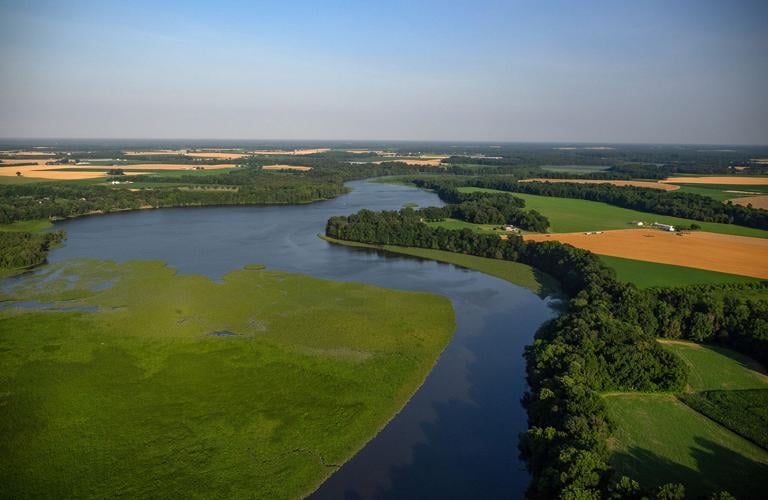

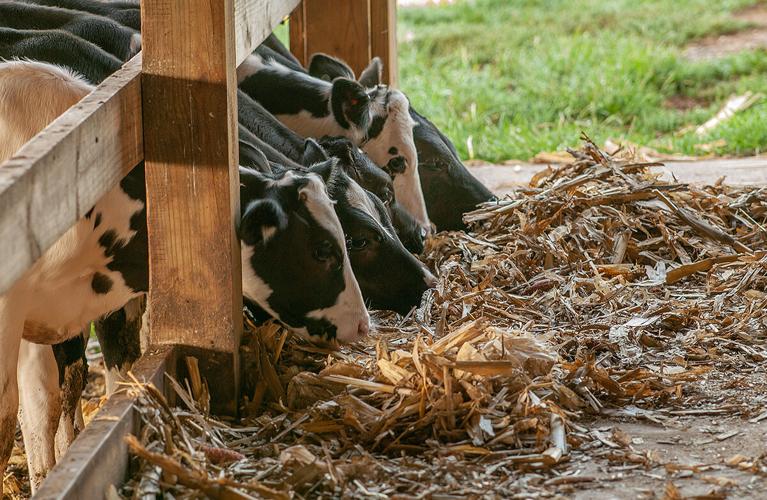
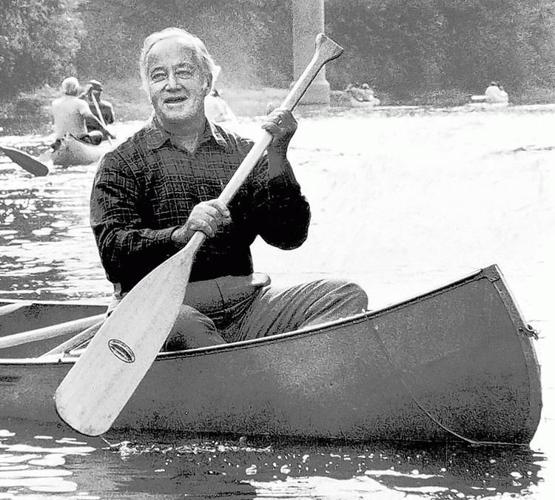
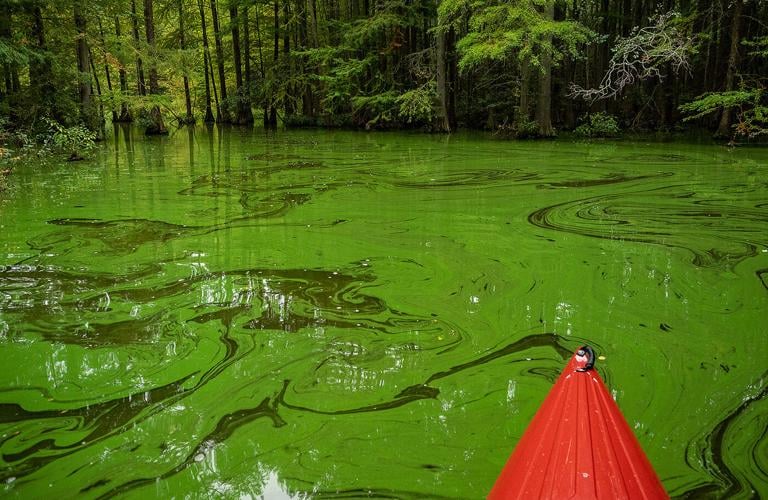

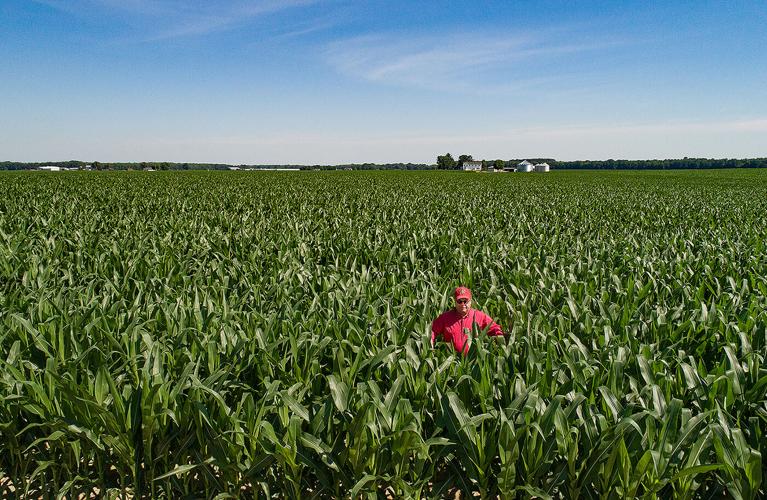

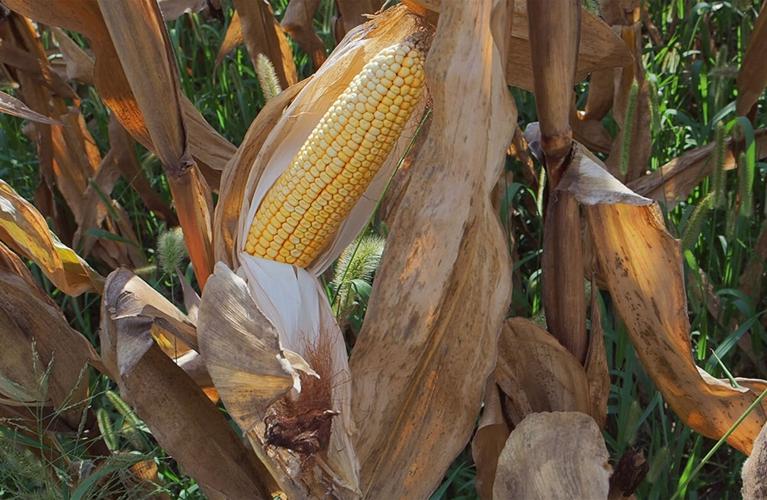
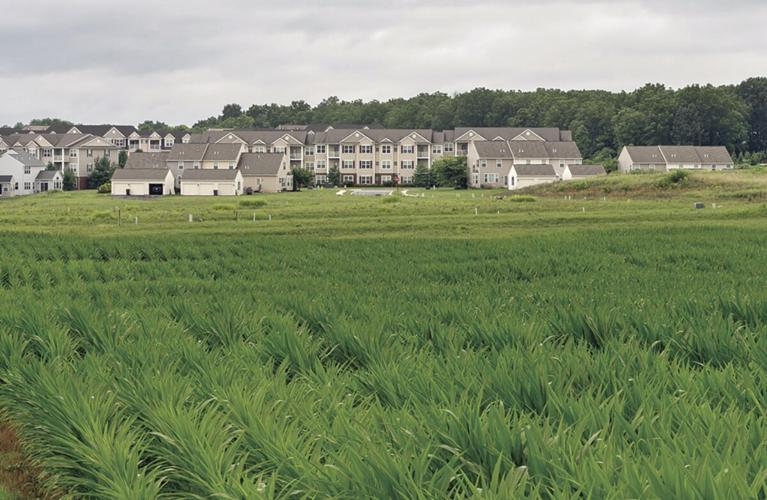
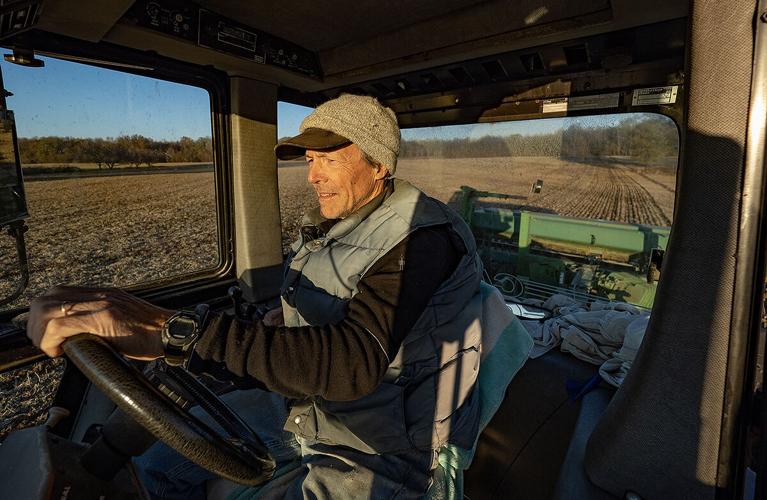
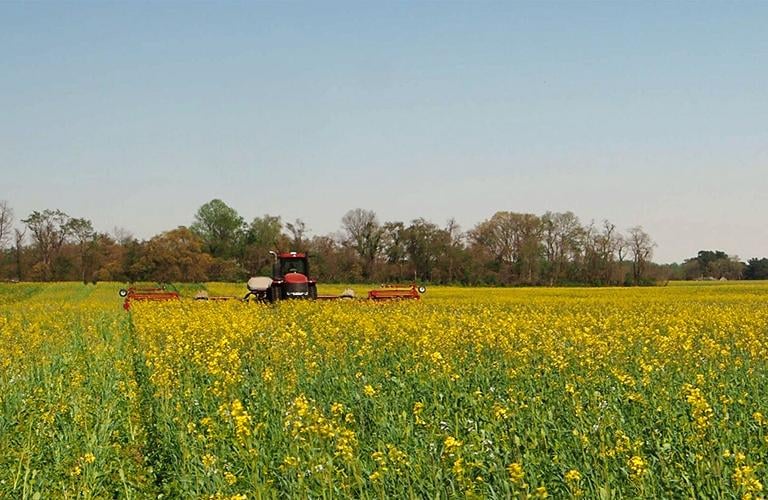

(2) comments
For Farmers/Producers in Virginia that are interested in implementing BMPs, I highly recommend they contact their local Soil & Water Conservation District about the Virginia Ag Cost Share program.
Thank you Karl for your unwavering commitment to providing in-depth balanced reporting on the very complicated issues impacting the Chesapeake Bay and the greater bay watershed. With respect to agriculture there is a hard reality that Pennsylvania must accept. Animal production levels that result in nutrients in manure and litter that exceed the uptake capacity of crop production and subsidized fertilizer production from gas production will ensure PA's destructive impact on water, air, and the climate. As long as money has a greater priority than the basic requirements of life we all are damned.
Welcome to the discussion.
Log In
We aim to provide a forum for fair and open dialogue.
Please use language that is accurate and respectful.
Comments may not include:
* Insults, verbal attacks or degrading statements
* Explicit or vulgar language
* Information that violates a person's right to privacy
* Advertising or solicitations
* Misrepresentation of your identity or affiliation
* Incorrect, fraudulent or misleading content
* Spam or comments that do not pertain to the posted article
We reserve the right to edit or decline comments that do follow these guidelines.